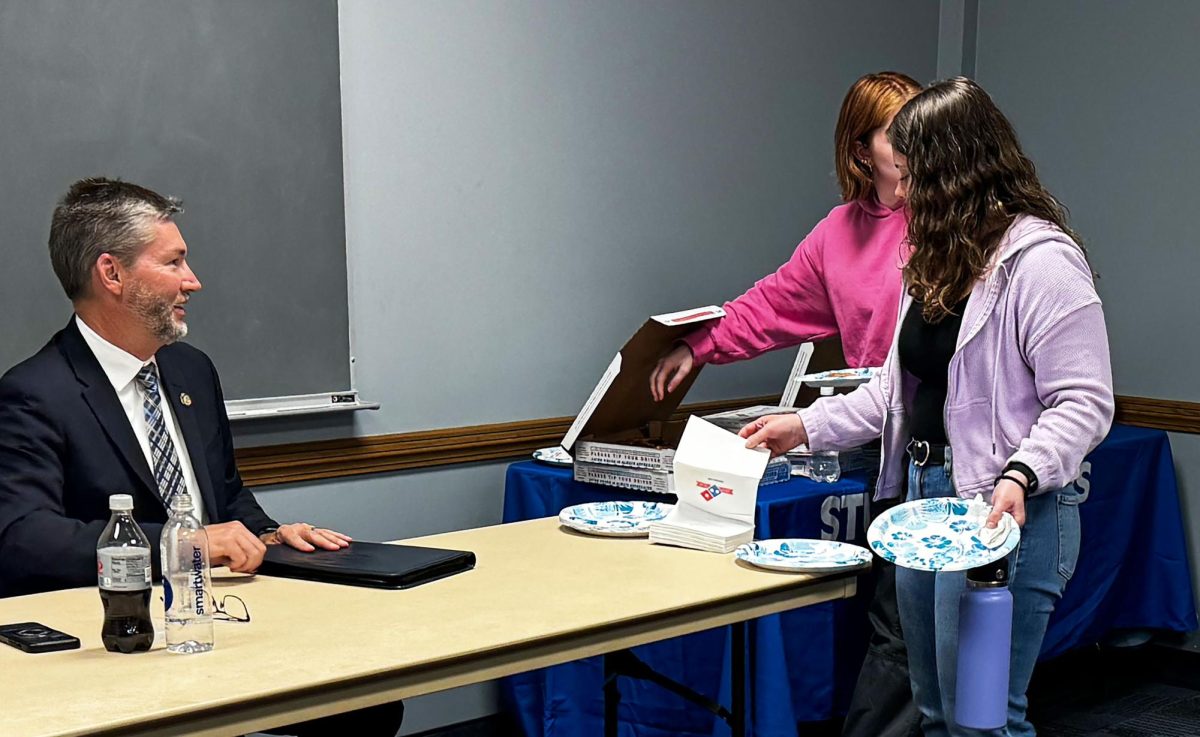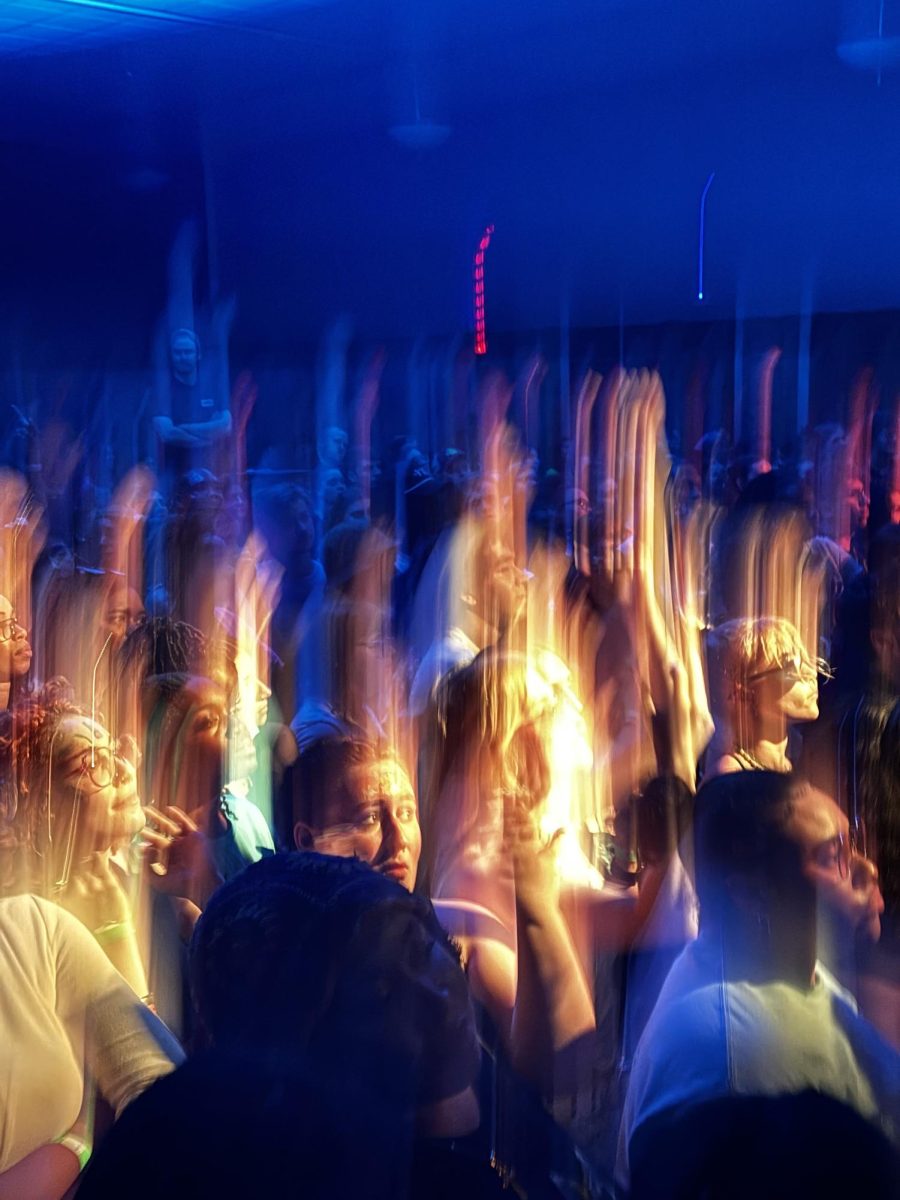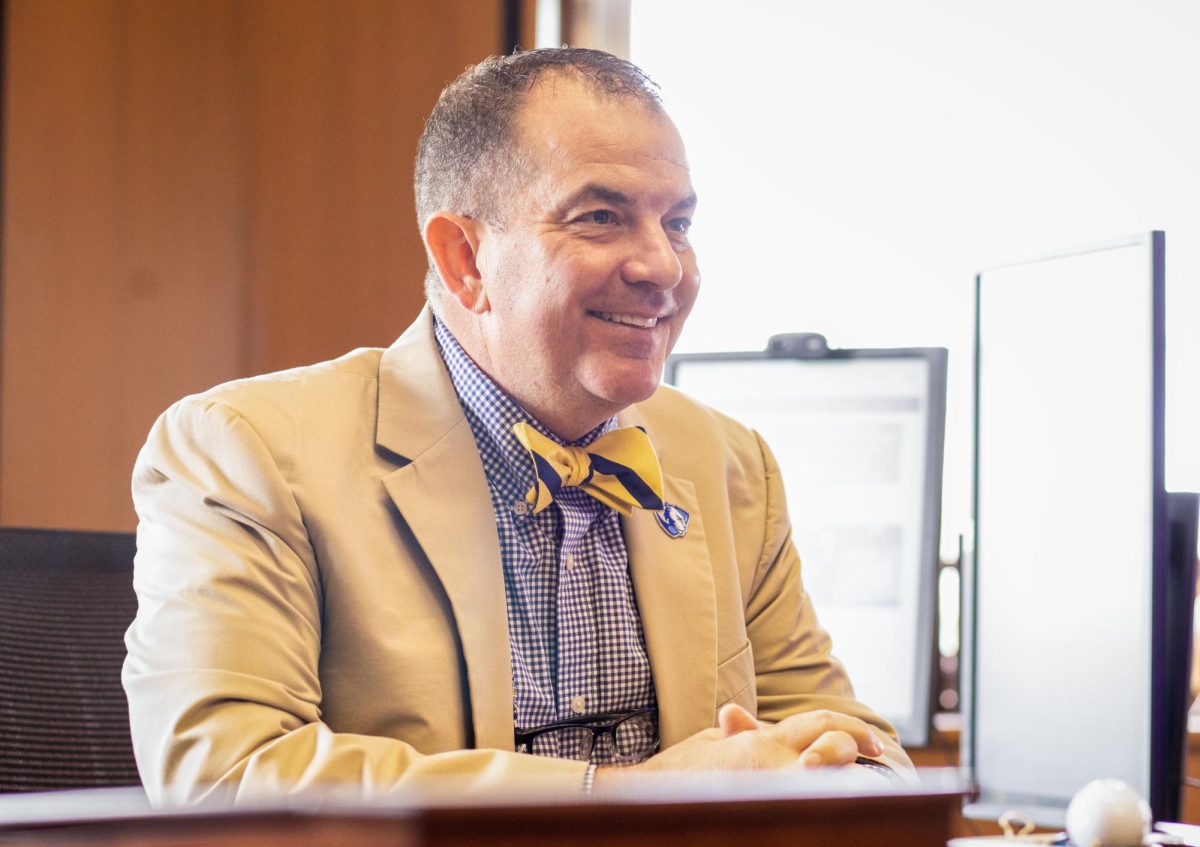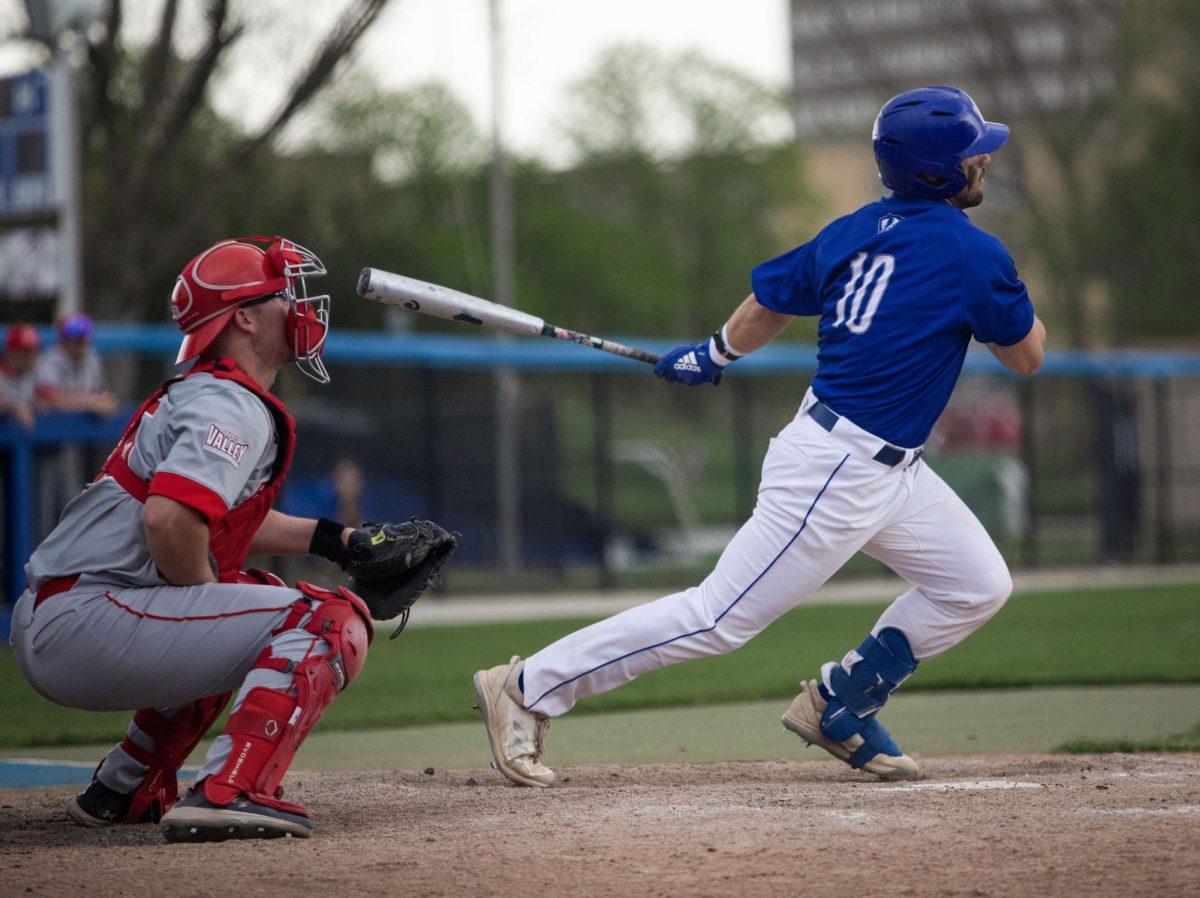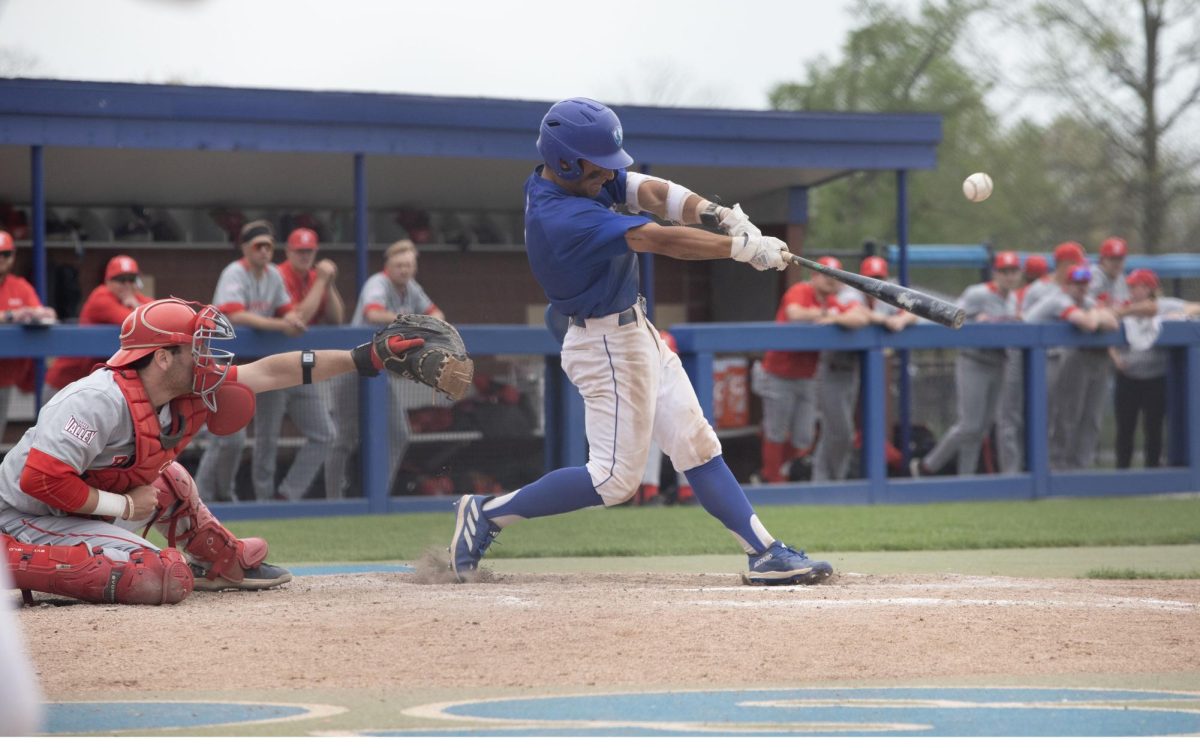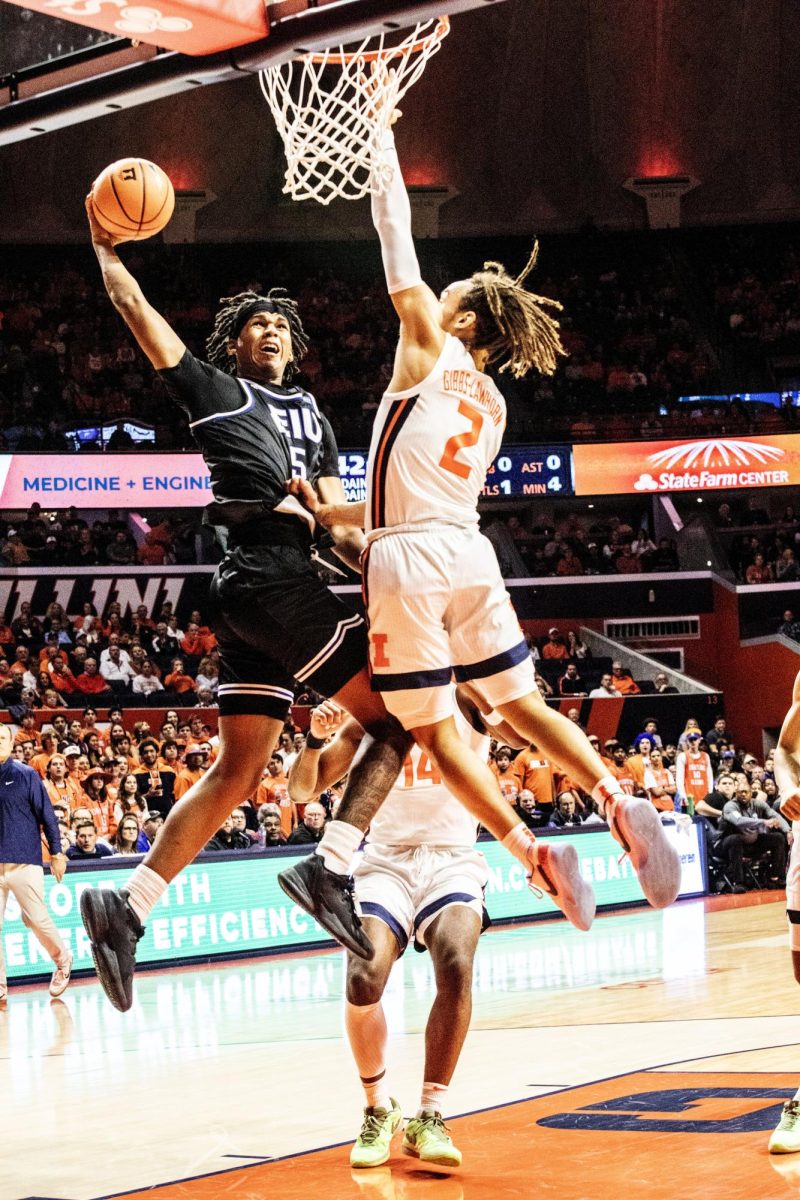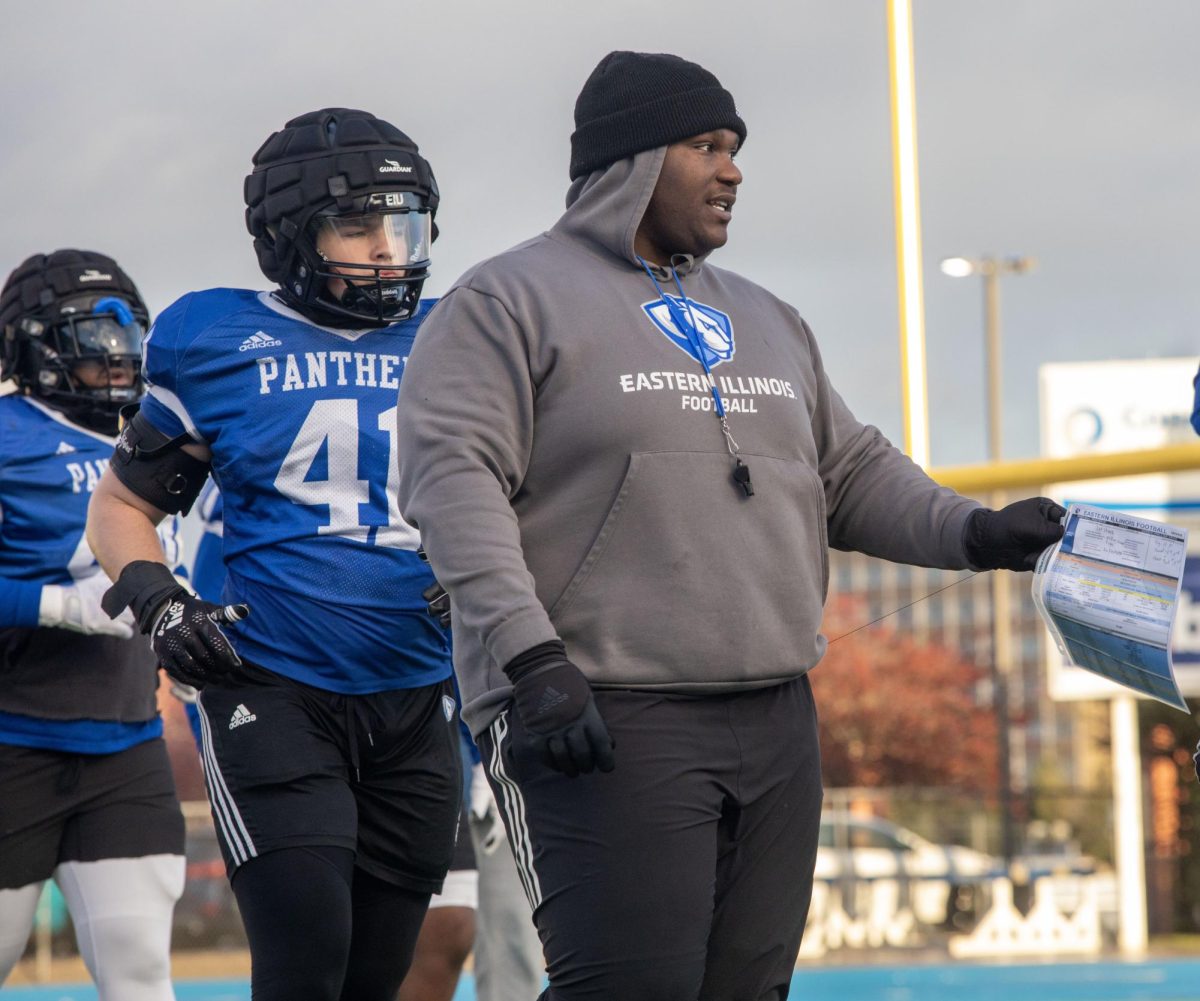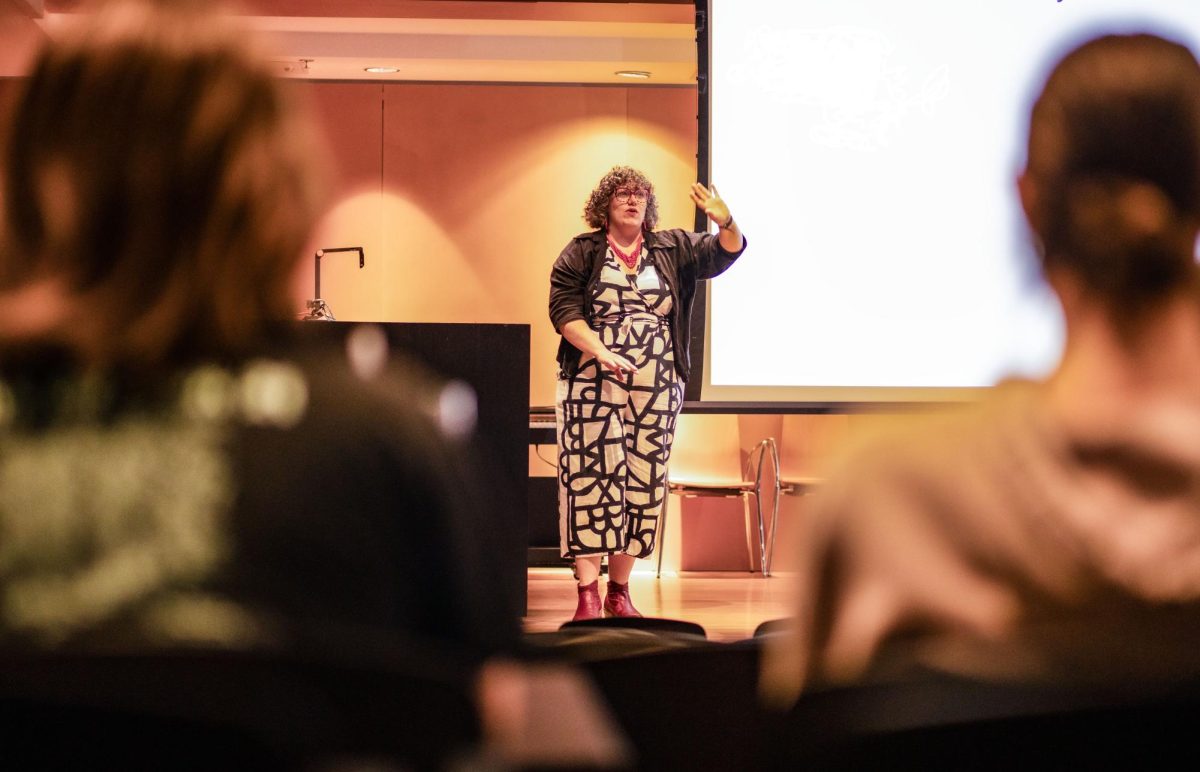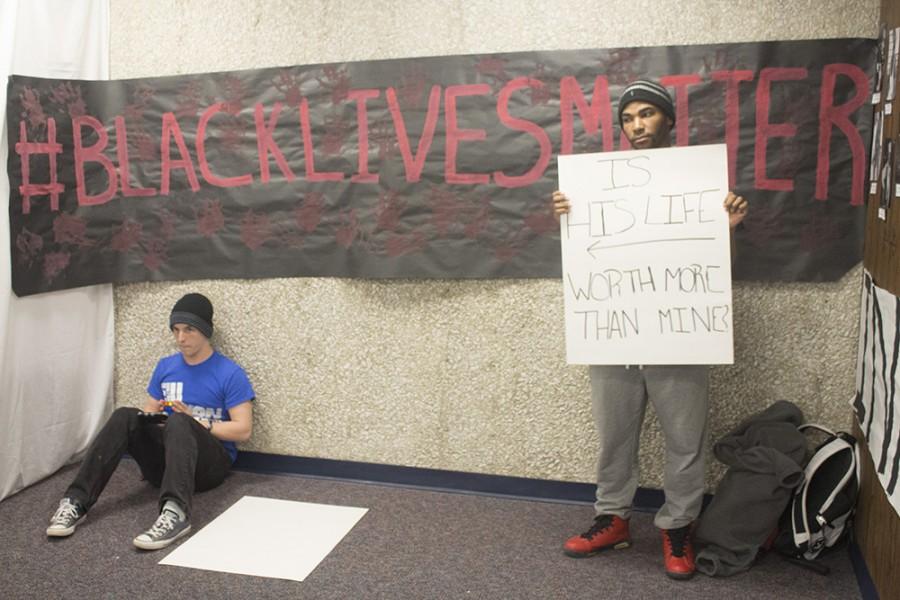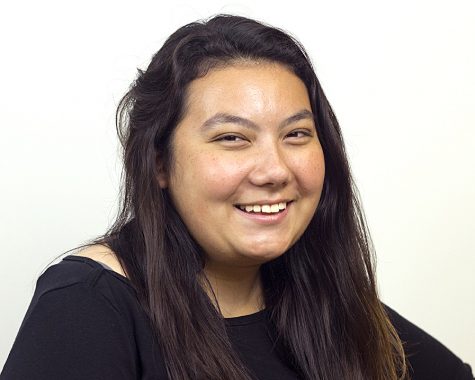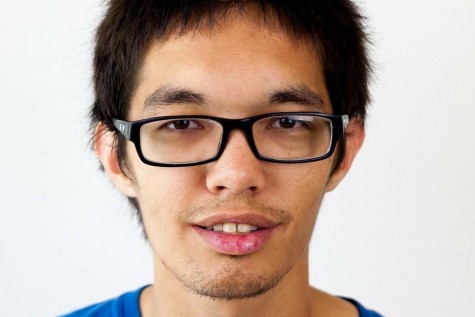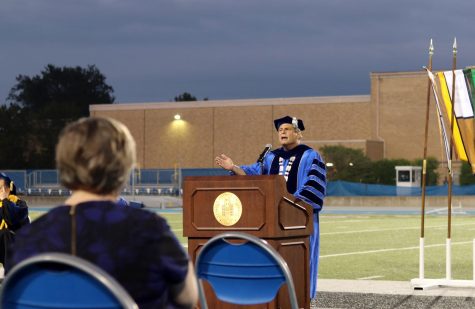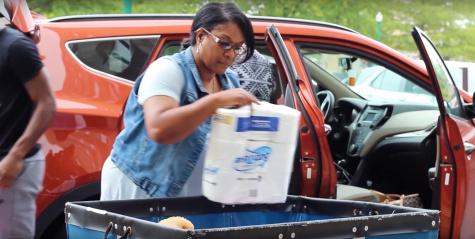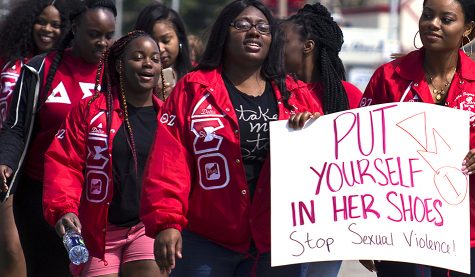Students learn about oppression through diversity program
Gavin Peterson, a freshman applied engineering and technology major, and Nathan Barnett-Bishop, a sophomore engineering participates in the police brutality segment of the Tunnel of Oppression on Tuesday in the basement of Stevenson Hall
March 30, 2016
Editor’s Note: The attached video contains strong language from a scene representing domestic violence.
Students learned about a range of issues at the “Tunnel of Oppression,” which is part of the Residence Hall Association’s Social Justice and Diversity Week programs.
Students were led by tour guides through the basement of Stevenson Hall where they were able to see people acting out skits depicting instances of oppression and signs with facts about oppressive issues faced by many.
One of the areas was decorated with images of people holding up signs with different microaggressions they had faced before.
These included, “You talk like a white person,” “You’re smart for a girl,” and “You don’t have an accent at all.”
Another room had students on the floor acting as homeless people with cups asking for change, one of whom had a sign with “I am not a statistic, I am a human being” written on it.
Signs around the room read that 1 in 5 homeless people suffer from untreated severe mental illness, and 25 percent of homeless people are employed.
In a different room, with a “Black Lives Matter” sign, pictures of people who had been killed by the police, such as Mike Brown, Sandra Bland, John Crawford and Eric Garner, were posted.
Before going to the bathroom, the words “He/She/It,” “Poser,” and “Thing” were around the door on postcards.
Some students had to fill out a card saying whether they were “Spleens” or “Appendixes” before going in a bathroom marked as a “Spleen” bathroom.
Those who the actors did not think were “Spleens,” and who they therefore decided were not able to go into the bathroom, were harassed and asked if they “belonged” there.
Outside of the bathroom, a sign asking “Where can I pee?” had laws written on it from various states, including North Carolina, where there is a $50 fine if a person’ sex does not match the gender-designated bathroom they use.
Brandon Berglund, a junior English major, said one of the parts that stuck out to him in the Tunnel of Oppression was the fact that one of the signs said one of the ways to end an abusive relationship was to “call it off,” when in reality it is not that easy.
After a debriefing on what they saw, those who entered the Tunnel went to a table where they were able to write down on an index card what their “call to action would be” to end oppression.
Examples of these were pledging to stop using derogatory language, and stop using micro-aggressions.
A friend of a friend of Berglund’s sister was in an abusive relationship, and he said there can be the fear of danger when calling off an abusive relationship.
Berglund said he liked the area of the Tunnel where facts on suicide were explained.
“That really hit me,” Berglund said.
One of the skits in the Tunnel featured a woman talking with her friend about how she was raped, but the friend blamed the woman because of what she wore and how drunk she was that night.
This was one of the scenes that stuck out to Shirley Jones, a sophomore family and consumer sciences major.
“That was really strong,” Jones said.
The scene in the bathroom impacted her as well as a room on body image, which she said was touching because of her own personal experiences.
“There were a couple times in middle school where I could get picked on because I’m so tall,” Jones said. “But I got over it because everyone’s made differently, so I’m going to be comfortable in my own skin.”
To end this oppression on campus, Jones said it is important to be there for each other.
“If you have a group of people who are there for you and who are willing to support you, it will help,” Jones said.
Sarah Wirtz, who volunteered in the Tunnel of Oppression, said she hoped people gained the understanding that people on campus are different from them and they should be accepting of those differences.
“Our actions have consequences on people’s lives,” Wirtz said.
One of the things that Wirtz liked about the tunnel was that it talked about disabilities since she has a younger sibling with special needs.
“I think people need to understand that just because a person has a disability doesn’t mean they are any less of a person than anyone else,” Wirtz said.
Cassie Buchman can be reached at 581-2812 or [email protected].




